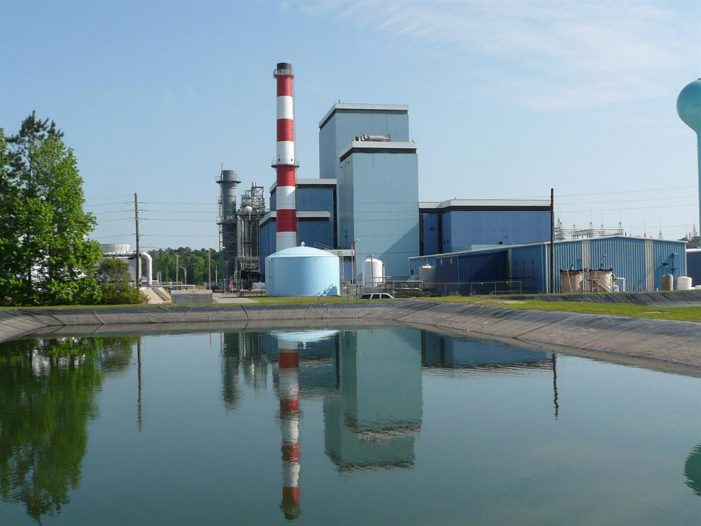Through an information request, Tallahassee Reports has learned that an outside metalurgical laboratory concluded in August 2012 that the leak in the 7.5 million gallon fuel tank located at the Hopkins Generating Station was caused by a “corrosion attack” and “microbiologically-influenced corrosion.” Also, the lab report and other writings by experts indicate the corrosion could have been avoided with proper maintenance.
The findings of the lab have not been publicly reported until now.
The Corrosion
The lab report, performed by Wisconsin based MSi Testing on August 21, 2012 revealed that corrosion was the main culprit in the tank failure. The tests were performed on three pieces of steel cut from the 1/8″ bottom that was installed in 2010 to provide a leak detection system at a total cost to taxpayers of over $1.8 million.
The corrosion developed within 2 years after the $1.8 million tank renovation was completed and the leak detection system was installed.
The lab report found that the corrosion occurred because water accumulated beneath the diesel and rested against the “uncoated steel floor” as the 3 million gallons of diesel “sat dormant for two years” until the leak was discovered.
The report by MSi is clear in its finding, “Based upon the performed tests, examinations and supplied background information, it is our opinion that the failure of the tank floor was caused by an under-deposit crevice corrosion attack, in combination with microbiologically-influenced corrosion.(MIC)”
The Lack of Maintenance
The report stated, “When stagnant conditions and accumulation of standing water at the bottom of carbon steel storage tanks are anticipated during storage of diesel fuels, we respectfully recommend installing an inert corrosion barrier between the tank floor and the stored product. Petroleum-resistant polymer coatings or linings will appreciably extend service life of similar tanks.”
A corrosion barrier was not in place in the Hopkins tank.
Also, in an article written by Michael Kirchner, Generac Power Systems, in the December, 2012 edition of Consulting-Specifying Engineer, Kirchner wrote that water from tank condensation can be a problem for diesel backup systems. The water can lead to corrosion if the fuel is not regularly treated. Kirchner said, “.. these issues can be mitigated by instituting an ongoing fuel testing and maintenance plan that regularly removes both water and sediment from the fuel tank.”
It is not known if the City instituted an ongoing fuel testing and maintenance plan to insure against water accumulation or not, nevertheless, crevice corrosion occurred in the uncoated steel, which caused the failure of the secondary bottom.
Questions about the Lack of Transparency and Mismanagement
Tallahassee City Manager Rick Fernandez, in an in-depth interview with the Tallahassee Democrat published in April of 2017, failed to mention that MSi had determined that the initial breach in the secondary bottom was due to corrosion to a two year old “uncoated” steel bottom that could have been avoided by maintenance actions.
Also, these findings were not publicly reported to city commissioners.
The results of the MSi lab tests, the existence of previous DEP tank maintenance violations, and the earlier report that city workers failed to perform required monthly inspections prior to the leak, raises questions about the management of the fuel tanks at the Hopkins Generating Station.
The fact that these issues are becoming public five years after the accident and that city commissioners remained uninformed about many of the details of the accident, raises questions about where transparency ranks as a priority with the City of Tallahassee.


And why is Mayor Gillum not all over this?
He’s too busy scrambling to get pols to back him. He lost civil rights “icon” John Lewis today. He may have to settle running for the Lt. Gov. job if he doesn’t catch up to Mrs. Hurm.